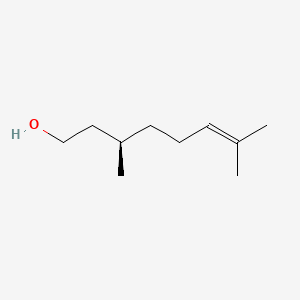| Authors | Title | Published | Journal | PubMed Link |
|---|---|---|---|---|
| Ren J et al. | Lysophosphatidic acid is constitutively produced by human peritoneal mesothelial cells and enhances adhesion, migration, and invasion of ovarian cancer cells. | 2006 | Cancer Res. | pmid:16540649 |
| Aguilar JA et al. | The atu and liu clusters are involved in the catabolic pathways for acyclic monoterpenes and leucine in Pseudomonas aeruginosa. | 2006 | Appl. Environ. Microbiol. | pmid:16517656 |
| Förster-Fromme K et al. | Identification of genes and proteins necessary for catabolism of acyclic terpenes and leucine/isovalerate in Pseudomonas aeruginosa. | 2006 | Appl. Environ. Microbiol. | pmid:16820476 |
| Hoi PM and Hiley CR | Vasorelaxant effects of oleamide in rat small mesenteric artery indicate action at a novel cannabinoid receptor. | 2006 | Br. J. Pharmacol. | pmid:16415907 |
| D'Orazi G et al. | Homeodomain-interacting protein kinase-2 restrains cytosolic phospholipase A2-dependent prostaglandin E2 generation in human colorectal cancer cells. | 2006 | Clin. Cancer Res. | pmid:16467083 |
| Fujiwara S et al. | Enhancement of Ca2+-regulated exocytosis by indomethacin in guinea-pig antral mucous cells: arachidonic acid accumulation. | 2006 | Exp. Physiol. | pmid:16263797 |
| Höschle B et al. | Methylcrotonyl-CoA and geranyl-CoA carboxylases are involved in leucine/isovalerate utilization (Liu) and acyclic terpene utilization (Atu), and are encoded by liuB/liuD and atuC/atuF, in Pseudomonas aeruginosa. | 2005 | Microbiology (Reading, Engl.) | pmid:16272386 |
| Frosch PJ et al. | Patch testing with a new fragrance mix detects additional patients sensitive to perfumes and missed by the current fragrance mix. | 2005 | Contact Derm. | pmid:15859993 |
| Frosch PJ et al. | Patch testing with a new fragrance mix - reactivity to the individual constituents and chemical detection in relevant cosmetic products. | 2005 | Contact Derm. | pmid:15859994 |
| Höschle B and Jendrossek D | Utilization of geraniol is dependent on molybdenum in Pseudomonas aeruginosa: evidence for different metabolic routes for oxidation of geraniol and citronellol. | 2005 | Microbiology (Reading, Engl.) | pmid:16000717 |
| Aulenta F et al. | Fragrance release from the surface of branched poly (amide)s. | 2005 | Molecules | pmid:18007278 |
| Garcia RA and Riley MR | Application of design-of-experiments procedures to optimize efficiently pretreatment of lipase for use in a nonaqueous reaction. | 2005 | Appl. Biochem. Biotechnol. | pmid:16258185 |
| Carrau FM et al. | De novo synthesis of monoterpenes by Saccharomyces cerevisiae wine yeasts. | 2005 | FEMS Microbiol. Lett. | pmid:15668008 |
| Yoshida N et al. | Inhibition of P-glycoprotein-mediated transport by extracts of and monoterpenoids contained in Zanthoxyli fructus. | 2005 | Toxicol. Appl. Pharmacol. | pmid:15890377 |
| Förster-Fromme K and Jendrossek D | Malate:quinone oxidoreductase (MqoB) is required for growth on acetate and linear terpenes in Pseudomonas citronellolis. | 2005 | FEMS Microbiol. Lett. | pmid:15869958 |
| Jung C et al. | PROPHIS: parabolic trough-facility for organic photochemical syntheses in sunlight. | 2005 | Photochem. Photobiol. Sci. | pmid:15875073 |
| Boersma YL et al. | A validated gas chromatographic method for the evaluation of enzymatic enantioselectivity in kinetic resolution applications. | 2005 | J Sep Sci | pmid:15881078 |
| Tian Y et al. | [Extraction and determination of volatile constituents in leaves of Eucalyptus citriodora]. | 2005 | Se Pu | pmid:16498999 |
| Denson DD et al. | Activation of BK channels in GH3 cells by a c-PLA2-dependent G-protein signaling pathway. | 2005 | J. Neurophysiol. | pmid:15647401 |
| Yoshikawa S et al. | Clara cell secretory protein and phospholipase A2 activity modulate acute ventilator-induced lung injury in mice. | 2005 | J. Appl. Physiol. | pmid:15608088 |
beta-Citronellol
Beta-citronellol is a lipid of Prenol Lipids (PR) class. The involved functions are known as Glycolysis.
Cross Reference
Introduction
To understand associated biological information of beta-Citronellol, we collected biological information of abnormalities, associated pathways, cellular/molecular locations, biological functions, related genes/proteins, lipids and common seen animal/experimental models with organized paragraphs from literatures.
What diseases are associated with beta-Citronellol?
There are no associated biomedical information in the current reference collection.
No disease MeSH terms mapped to the current reference collection.
PubChem Associated disorders and diseases
What pathways are associated with beta-Citronellol
There are no associated biomedical information in the current reference collection.
PubChem Biomolecular Interactions and Pathways
Link to PubChem Biomolecular Interactions and PathwaysWhat cellular locations are associated with beta-Citronellol?
There are no associated biomedical information in the current reference collection.
What functions are associated with beta-Citronellol?
Related references are published most in these journals:
| Function | Cross reference | Weighted score | Related literatures |
|---|
What lipids are associated with beta-Citronellol?
There are no associated biomedical information in the current reference collection.
What genes are associated with beta-Citronellol?
There are no associated biomedical information in the current reference collection.
What common seen animal models are associated with beta-Citronellol?
There are no associated biomedical information in the current reference collection.
